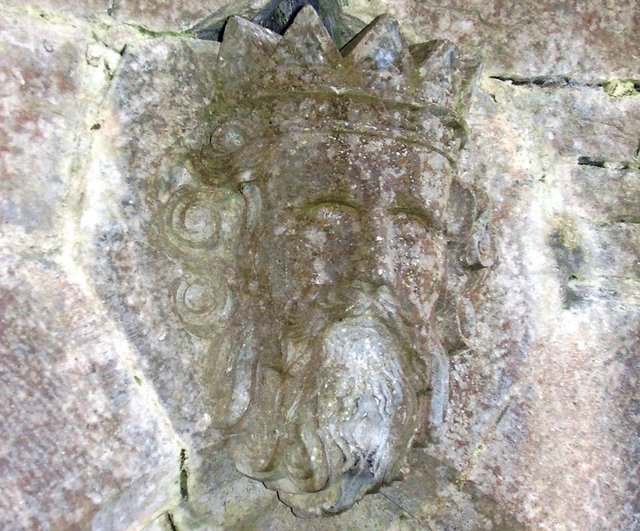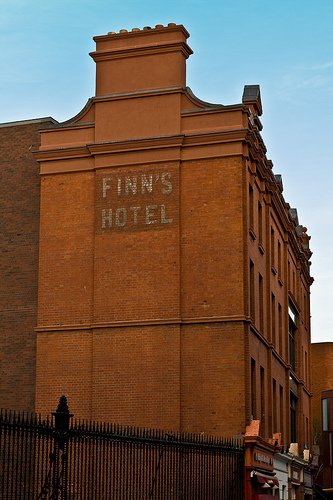Finnegans Wake – A Prescriptive Guide – 6

To start with in the beginning
On 11 March 1923 James Joyce wrote a short letter to his benefactress Harriet Shaw Weaver. After discussing Ulysses and the medical treatment he was receiving for his failing eyesight, he added, almost by way of a postscript, the following remarks:
Yesterday I wrote two pages—the first I have written since the final Yes of Ulysses. Having found a pen, with some difficulty I copied them out in a large handwriting on a double sheet of foolscap so that I could read them. Il lupo perde il pelo ma non il vizio, the Italians say. The wolf may lose his skin but not his vice or the leopard cannot change his spots. (Letters I 11 March 1923)
After six months of fishing for a theme and exhaustive notetaking, Joyce had finally begun to write Finnegans Wake.
Well, sort of.
The final phase of the genesis of Finnegans Wake is also the least understood. It lasted about six months, during which Joyce drafted several vignettes—character sketches, each one no more than a page or two in length:
Roderick O’Conor
St Kevin’s Orisons
Tristan and Isolde
St Dympna
Mamalujo (The Four Waves of Erin)
St Patrick and the Druid
Here Comes Everybody
These vignettes are akin to the charcoal studies an artist might make in his sketchbook before he puts paint to canvas. With one exception, these sketches were actually incorporated into the final text of Finnegans Wake—all at a very late date in the composition of the book, and usually after significant revision. It is possible that Joyce drafted other vignettes that are no longer extant or that have found their way into private ownership. St Dympna, the one sketch that was not deemed worthy of inclusion in the final text, only turned up in 2004 and its existence was a complete surprise to the world of Wakean scholarship (Henkes 3).
In the months of March-August 1923 Joyce drafted and redrafted these sketches, continually elaborating and expanding them. It was only in August 1923, with the drafting of the final vignette, Here Comes Everybody, that Joyce truly began to write Finnegans Wake. That is to say, he sat down and wrote what he subsequently thought of as the opening lines of his new work.
But even that simple statement requires some qualification, because those lines were not destined to be the opening lines at all. And it was only after he had written them that he first realized that they might be the opening lines of a new novel.
So just what was Joyce up to when he drafted these vignettes? Did he finally know what book he was writing, or was he still fishing for inspiration? The answer to this question is still in dispute, but there are two main lines of argument, one espoused by David Hayman and one by Danis Rose.
David Hayman
In Nodality and the Infra-Structure of “Finnegans Wake”, an article published in the James Joyce Quarterly in 1979, David Hayman proposed that the vignettes were the prime nodes around which Joyce subsequently elaborated the text of Finnegans Wake:
The key element here is the “prime node” or apex of the “nodal system,” a passage where some act, activity, personal trait, allusion, theme, etc. surfaces for its clearest statement in the text, is made manifest, so to speak, and in the process brings together and crystallizes an otherwise scattered body of related material. This prime node is the generative center for lesser and generally less transparent passages devoted to its elaboration or expansion and strategically located in the text ... these snapshots function as texts or pretexts to which the rest of the Wake will be added as commentary, or shadow text ... these narrative fragments become contexts, centers of significance. (Hayman 1979:136 ... 137 ... 137)
This interpretation of the vignettes is supported—as Hayman (136) pointed out—by a comment Joyce made in a letter to Harriet Weaver:
I work as much as I can because these are not fragments but active elements and when they are more and a little older they will begin to fuse themselves. (Letters 9 October 1923)
Hayman elaborated his nodal theory in The “Wake” in Transit (1990), which also borrowed from his earlier paper in the James Joyce Quarterly:
Joyce’s determination to build the Wake around the early sketches clearly enabled and conditioned the networks of echoing and interacting passages. In its turn, the nodal procedure inverted Joyce’s practice in Ulysses and set off a revolution in narrative methods that has yet to run its course. Clearly, nodality does not constitute the only structuring mechanism ... but access to
the larger formal components and to the tenuous narratives they frequently embody is achieved only by means of and through the dense weave of a language designed as much to shield as to reveal them. Thanks to that thicket of words, nodality is essential in the process of acquiring the Wake, acquisition being a condition of reading. The excess of signification we encounter finally signifies far less than the process of engaging ourselves in and becoming the text. (Hayman 1990:41 ... 42)
No matter what the method, context, or moment of the Wake, by recalling and reasserting familiar themes and providing a center for their respective nodal systems, the sketches guaranteed from the beginning the presence of an extensive range of textual and even narrative discourse. Beyond providing much-needed bearings to the edgy reader and confirming authorial control, they gave the developing text free rein to play upon both our expectations and the recognition factor. Through their offices, the narrative tradition was at once buttressed and destroyed ... (Hayman 1990:42)
Hayman seems to be arguing that the vignettes were like seeds that germinated in Joyce’s mind, before sprouting and ramifying to generate the final text. This is a bold idea. There were only about half-a-dozen vignettes to start with—seven, if we exclude St Dympna but include, as Hayman did, a later sketch, The Revered Letter, which Joyce first drafted in December 1923. The first edition of Finnegans Wake was a book of some 628 pages. On average, therefore, each vignette must have been responsible for generating approximately one hundred pages of the finished article. That’s a tall order.
On the other hand, Hayman did not claim that the nodal infrastructure of Finnegans Wake was due only to the early vignettes:
Though I am claiming for the sketches a distinct role as the initiators of the nodal infrastructure, they constitute only the first of at least nine categories that I shall list in something like their order of importance:
(1) The early sketches through the Letter.
(2) Passages devoted to character exposition: the profiles and monologues.
(3) Symmetrical passages such as the brother confrontations and the fables.
(4) Expositions of major themes: the fall, the flood, the crime, historical decay, sexual activity, sexual deviance, writing, language, etc.
(5) Exposure of aspects of the landscape: river, mountain, tree, stone, city, park, sea, fauna and flora.
(6) Allusive parallels drawn from history, religion, and literature: Oscar Wilde, Shakespeare, Ibsen, Swift, Sterne, Smollett, Renan, Bishop Berkeley, Parnell, Christ, Buddha, Freud and Jung, etc.
(7) Allusions to Joyce, his work, and his family.
(8) Key rhythmic clusters: the tonality of the river, the legalistic “[a]tion” references to the twelve apostles/patrons/judges/hours/ months, the Quinet passage, HCE’s stutter, the thunder words, song and poetic tags, etc.
(9) Foreign-language word clusters. (Hayman 1990:54-55)
Each one of these nine categories was subjected to nodality—if Hayman is to be believed.
Danis Rose and Finn’s Hotel
In 1992 another scholar, Danis Rose, put forward a new and radical theory on the relationship between the early sketches of 1923 and the novel that was published in 1939. While studying the Finnegans Wake notebooks, Rose had noticed that references to a Finn’s Hotel began to appear in 1923. Now, there was a Finn’s Hotel in the centre of Dublin (1-2 Leinster Street) in Joyce’s day. In fact, his partner, Nora Barnacle, was employed as a chambermaid in Finn’s Hotel when she first met Joyce. Was Joyce planning to set his new work here? Finnegans Wake as we now have it is set in the Mullingar House Hotel in Chapelizod. Was Joyce perhaps planning to exercise his artistic licence and rename this establishment Finn’s Hotel?
In the Spring of 1989, Rose, in collaboration with his brother John O’Hanlon, argued that Finn’s Hotel was the original title of Finnegans Wake and that Joyce did not settle on the final title of the book until 1927 at the earliest, and possibly not until 1937!
In 1992 Rose went even further than this and argued that Finn’s Hotel was not simply the original title of Finnegans Wake, but a very different work altogether. Three years later he adumbrated this new theory in The Textual Diaries of James Joyce (the title is a reference to the Finnegans Wake notebooks):
Joyce’s first idea for a book to follow Ulysses was for a series of short texts based on Irish historical and mythological themes. These he composed in 1923 under the title “Finn’s Hotel”. In late 1923-early 1924 he changed his mind and, laying aside the short texts, began instead to write the long continuous work that eventually became Finnegans Wake. (Rose 1995:21 fn)
By 1924 the original Finn’s hotel with its distinct windows or vignettes had been supplanted by a new novel dealing primarily with the (original) sin in the park of H. C. Earwicker… (Rose 1995:58-59)
In 2013, to the consternation of some scholars, Rose actually published Joyce’s vignettes under the title Finn’s Hotel, reclaiming this lost link in the Joycean canon. Rose believed that when Joyce drafted the last of the vignettes, Here Comes Everybody, he realized that it had the potential to be expanded into a full novel—in much the same way, Ulysses had begun life as a short story originally intended for Dubliners. So he abandoned Finn’s Hotel—although initially retaining that title for the new work—and struck out in a new direction:

... I (apparently alone) was not happy about the general understanding of the nature and position within the oeuvre of the fragments. They simply did not lock into the genesis of the Wake, of which we have learned a great deal, in great particularity. We can trace ab ovo and in fine point the evolution of the various chapters, sections, and subsections of the Wake from start to finish and at no point do we have need of, or can rationally discern, any superstructure that these ‘earliest’ elements (‘nodes’ in David Hayman’s terminology) could supposedly have supplied. Certainly one of them, ‘Here Comes Everybody’—narrating how Pop got his name of Earwicker—did become the hopping-off point for Finnegans Wake and certainly the themes of letter-writer and letter-carrier were profoundly developed; but the main lines of the latter went elsewhere, and the ad hoc absorption of some of the Finn’s Hotel pieces into the work in progress (Finnegans Wake) at a very late moment, in 1938, did in no wise support their supposed nature as early drafts. (Rose 2013:Introduction)
In October 1923, Joyce had written to Harriet Shaw Weaver about—among other things—the possible publication of one of the vignettes in Ford Madox Ford’s literary journal The Transatlantic Review:
Mr Hueffer [ie Ford Madox Ford] is very insistent I should give him the Earwicker episode [ie Here Comes Everybody] ... I am gathering my scattered wits for a different essay and have made plans and jigsaw puzzle sketches in the penumbra of this room. (Letters I: 23 October 1923)
Is this different essay a reference to the new work? It was in October that Joyce first drafted The Cad Kernel, an extension of Here Comes Everybody that eventually became section I.2§2 of Finnegans Wake:
This next section (I.2§2), dating from October 1923, postdates Finn’s hotel and is in a sense the “real” starting-point of Finnegans Wake. (Rose 1995:61)
Taking Stock
When I first heard of Hayman’s nodal theory, I thought it sounded a little strained. Is that any way to write a novel? Or—more to the point—was that actually how Joyce wrote Finnegans Wake? And Rose’s claim that the vignettes which Joyce inserted into the final text simply didn’t fit is hard to deny and impossible to refute. In the case of one or two of them, the reader is indeed given the impression that they were parachuted in at a very late moment—perhaps against the author’s better judgment.
But having read Hayman’s presentation of his theory and having considered it at greater length, I find it is not so easily dismissed. At the very least, when the reader is trying to make sense of a difficult passage in Finnegans Wake, it may be constructive to ask: How did Joyce come to conceive this passage? Did it grow out of one of the vignettes? Or did it grow out of another passage that grew out of one of the vignettes? Or did it sprout from another one of Hayman’s nine categories?
On the other hand, if Rose’s Finn’s Hotel theory is correct, what implications, if any, does this have for Finnegans Wake? Were the characters that feature in the vignettes to be guests of the hotel? Or were the sketches intended to be the dream thoughts that pass through the minds of the actual guests during a single night?

Wherever the truth lies, one thing is undeniable: the drafting of these quasi-independent vignettes set the pattern that Joyce was to follow for the next fifteen or sixteen years. Finnegans Wake was not written from start to finish like a normal novel, where the author is guided by a plot, its development and eventual dénouement. Joyce drafted Finnegans Wake piecemeal and out of sequence. The different sections of the book were worked on almost independently of one another—almost—and subsequently integrated into the whole like the tesserae of a mosaic or the pieces of a jigsaw puzzle.
Early drafts of most of the vignettes—including The Revered Letter and The Cad Kernel— can be read on the archived version of Jorn Barger’s Robotwisdom website:
Roderick O’Conor
St Kevin’s Orisons
Tristan and Isolde
Mamalujo
St Patrick and the Druid
Here Comes Everybody
The Cad Kernel
The Revered Letter
Jorn Barger also has some interesting things to say about possible links between the vignettes and Ulysses and about the origins of Finnegans Wake in general: Origins of Finnegans Wake.
References
- Jorn Barger, Robotwisdom
- David Hayman, Nodality and the Infra-Structure of “Finnegans Wake”, James Joyce Quarterly, Volume 16, Number 1/2, Structuralist/Reader Response Issue (Fall, 1978 - Winter, 1979), pp. 135-149, University of Tulsa, Tulsa OK (1979)
- David Hayman, The “Wake” in Transit, Cornell University Press, Ithaca, New York (1990)
- Robbert-Jan Henkes, 2 Weeks in the Life of James Joyce, Genetic Joyce Studies, Issue 14, Antwerp (Spring 2014)
- James Joyce, Finnegans Wake, Faber & Faber Limited, London (1939)
- James Joyce, Letters of James Joyce, Volume I, Stuart Gilbert (editor), Faber & Faber, London (1957)
- Danis Rose, John O’Hanlon, “The Name of the Book”, A Finnegans Wake Circular, 4.3 (Spring 1989), pp 41-50 (1989)
- Danis Rose, The Textual Diaries of James Joyce, The Lilliput Press, Dublin (1995)
- Danis Rose, John O’Hanlon, The Restored Finnegans Wake, Penguin Classics, London (2012)
- Danis Rose, Finn’s Hotel, Ithys Press, Dublin (2013)
Image Credits
- Roderick O’Conor: Wikimedia Commons, Public Domain
- Finn’s Hotel: Sam McGrath, Creative Commons
- James Joyce Mosaic: William Murphy, Creative Commons
This is among my favorite posts. Reading those earlier drafts really sheds some light on what is happening in those sections (and I need all the help I can get).